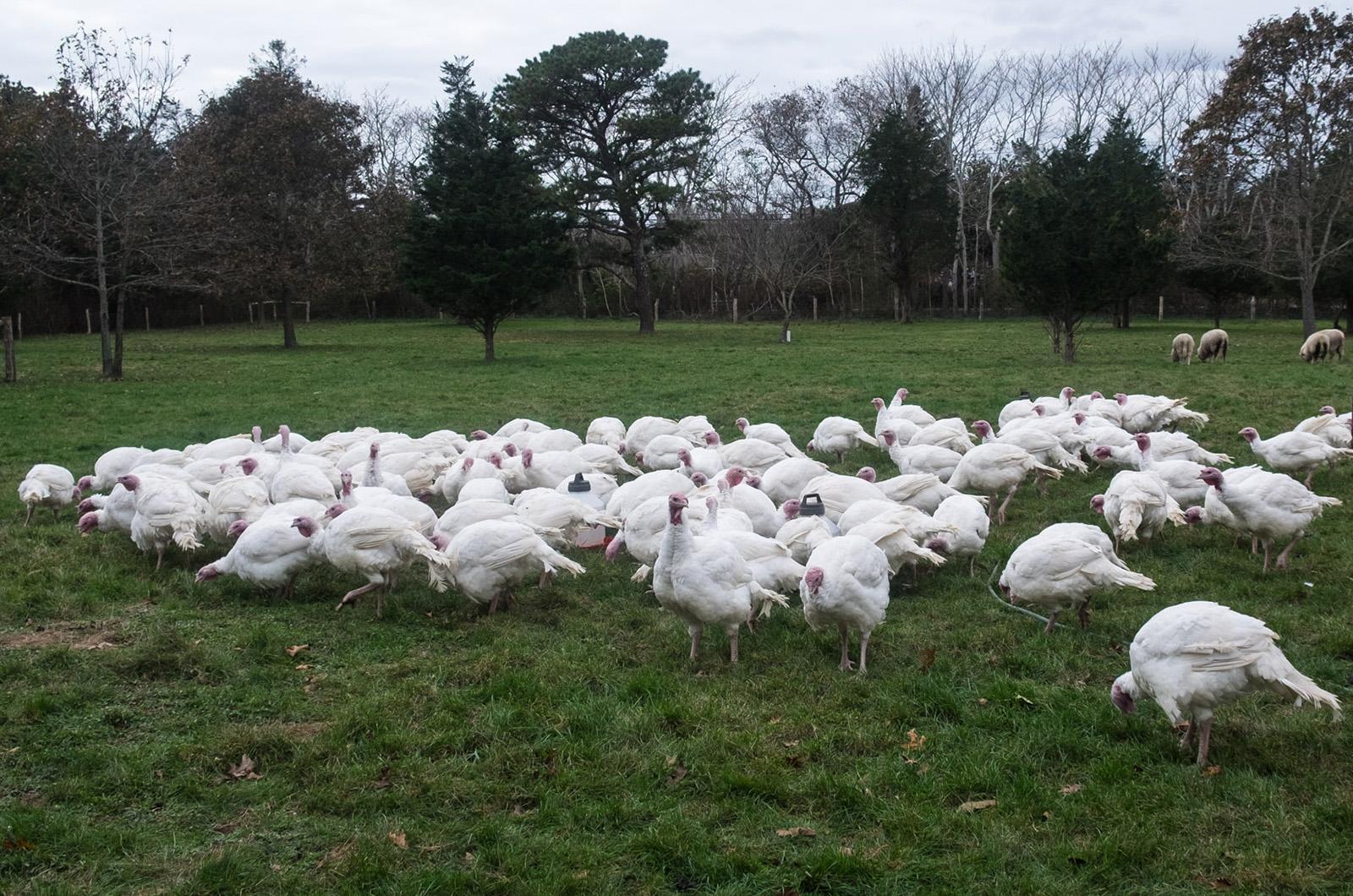At this time of year, I always think of Jefferson Munroe. Though he has left the Island, his passion for poultry remains and so did, for a quick minute, the availability of his terrific turkeys.
If you don’t know Jefferson, he is the proprietor of The Good Farm. The farm, formerly of Tisbury and now in Connecticut (the housing and land crunch strikes again), produces ducks, chicken, turkeys and other pastured meats. A few lucky and fast-acting Islanders were able to get his fabulous fowl for their Thanksgiving table through a collaboration with Beetlebung Farm. Like Taylor Swift tickets, they went fast.
For this year’s holiday, he was offering a heritage breed of turkey called midget whites. Heritage breeds are livestock that have been historically raised by farmers and homesteaders and were adapted to a particular place. They were bred for characteristics farmers desired, such as taste, heartiness and temperament. By the 1960s, as food production became industrialized, heritage breeds became rare birds. The new way was to choose poultry that could provide for maximum profit in the shortest amount of time by large corporate interests.
Most of today’s turkeys sold are broad breasted whites. In fact, approximately 99.99 per cent of the turkeys consumed at Thanksgiving are this breed. Broad breasted whites have been selected because they grow fast, provide a lot of white meat and can be produced cheaply in large numbers.
However, the creation of this industrial bird comes with a steep cost to the animals and to the diversity of our food supply. Call them Frankenbirds.
Broad breasted whites cannot mate naturally, are barely able to walk, are susceptible to disease and their meat tends to be dry and less flavorful than their heritage brethren. The preponderance of this breed also makes our food supply vulnerable, as disease can wipe them all out; think avian flu. By 1990, many of the heritage breeds were almost extinct.
Diversity is the answer to securing our food supply and creating better-tasting food. The concept of raising heritage breeds for food to save them has been taking hold, an idea led by Slow Food, the Heritage Turkey Foundation and the American Livestock Breeds Conservancy.
Heritage breeds were originally developed from wild stock and over the years bred thoughtfully to local perfection. From different places came uniquely-adapted species over hundreds of years of breeding. These breeds were codified by the American Poultry Association Turkey Standards of Perfection of 1874 and they even have wonderful, localized names. Narragansett, bourbon red, standard bronze, Jersey buff, slate, black Spanish and white Holland were all on the original and other species — including the royal palm, midget whites and Beltsville small white — were added later.
To be fair: because of their rarity, cost and limited availability, not everyone will be able to serve these special birds. And I am not criticizing those of us who will be eating other turkeys. We all do what we can and work within our means and the limitations of our food supply.
Yet it was still very good that The Good Farm was able to offer midget whites this year. Those that got the golden turkey will be enjoying a different kind of holiday: one that honors the past, secures the future and supports a way of life and a way of eating.
Suzan Bellincampi is islands director for Felix Neck Wildlife Sanctuary in Edgartown and the Nantucket Wildlife Sanctuaries. She is also the author of Martha’s Vineyard: A Field Guide to Island Nature and The Nature of Martha’s Vineyard.







Comments (1)
Comments
Comment policy »